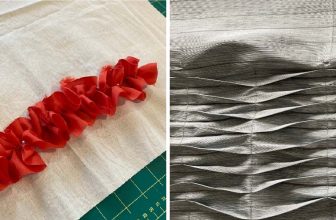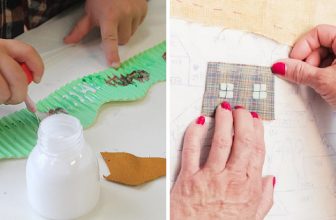How to Disinfect Fabric
Have you ever felt concerned about the cleanliness of your family’s fabrics? Keeping soft surfaces germ-free can be a challenge, but with the right techniques and products, it can be done.
In this blog post, we’ll discuss some tried and true methods for sanitizing fabric to ensure that everyone in your home is as safe and healthy as possible. From effective DIY cleaning solutions to commercial disinfectants designed specifically for fabrics, we’ve got all the tips and tricks you need! So let’s dive into how to disinfect fabric – safely.
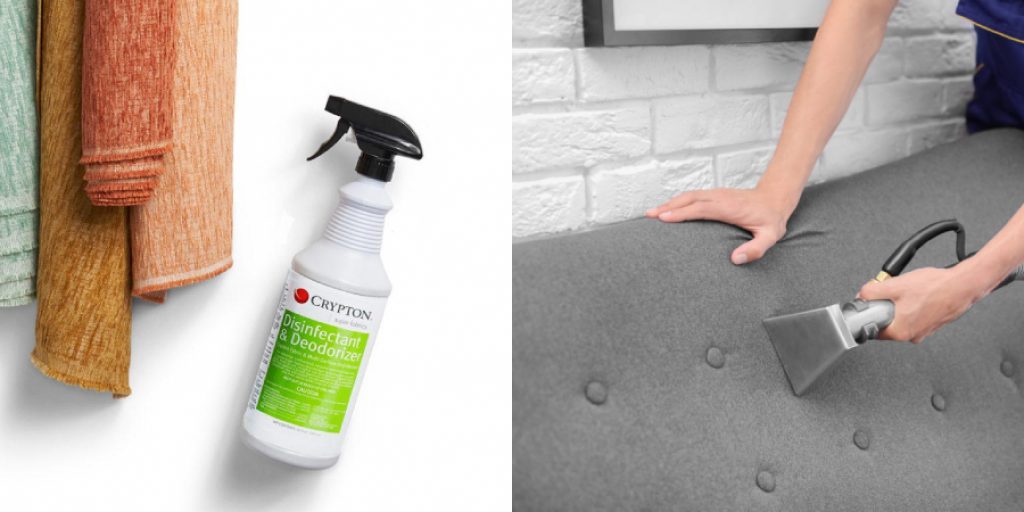
The Importance of Disinfecting the Fabric
Disinfecting the fabric is an important part of ensuring a healthy indoor environment. It helps to prevent the spread of bacteria, viruses, and other microorganisms that can cause illnesses and infections. By properly disinfecting fabrics, such as upholstered furniture, carpets, bedding, curtains, and other materials commonly used in homes and businesses, you can keep yourself and other occupants safe from the potential risks of bacteria and other pathogens.
It is important to note that not all fabrics require disinfection; for example, polyester and nylon materials only need to be vacuumed or wiped with soap water. However, fabrics made out of natural fibers, such as cotton, linen, and wool, should be disinfected more frequently. This is especially true for fabrics used in high-traffic areas, such as restaurants or hospitals, where sanitation is of the utmost importance.
What Can Disinfect Fabric?
Fabric can be disinfected using a variety of methods, including the use of detergents or bleach-based solutions. Detergents are typically used for lightly soiled fabrics, while bleach solutions are more effective at killing bacteria and viruses on heavily soiled surfaces. Depending on the fabric, it may also be possible to treat it with an antibacterial or antiviral spray or wipe. Additionally, some fabrics can be laundered in hot water to disinfect them.
In all cases, it is important to read and follow the care instructions on the label of the fabric before attempting any disinfecting treatment. If in doubt, it is always best to contact the manufacturer for advice. Finally, steam or dry heat may also be used to sanitize fabrics, although caution should be taken as this can damage delicate fabrics.
It is important to note that disinfecting fabrics does not guarantee prevention of illnesses such as colds and flu. The only way to prevent the spread of these illnesses is through proper hygiene practices such as regular handwashing and avoiding contact with people who are ill. Additionally, fabrics should be washed regularly to remove any dirt or other contaminants that could pose a health risk. By following these steps, you can help keep yourself and your family safe from infection.
9 Methods How to Disinfect Fabric
1. Vinegar
Vinegar is a natural disinfectant that can be used on fabric. To use, mix equal parts vinegar and water in a spray bottle and spritz onto the fabric. Let the solution sit for a few minutes before wiping away with a clean cloth. Vinegar is a great way to keep fabrics fresh and hygienic in between washes.
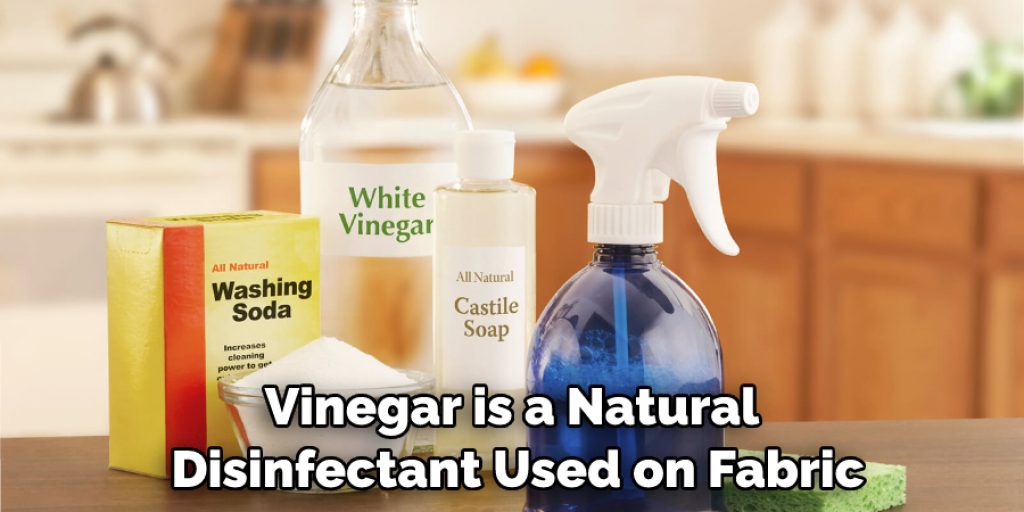
It is especially effective at removing odors caused by bacteria or mold, making it an excellent choice for fabrics that aren’t machine-washable. Additionally, it can be used on other surfaces as well as fabric, making it a versatile cleaning product. Just be sure to test it on a hidden area of the fabric first, as vinegar can sometimes cause discoloration.
2. Lemon Juice
Lemon juice is another natural disinfectant that can be used on fabric. To use, mix equal parts lemon juice and water in a spray bottle and spritz onto the fabric. Let the solution sit for a few minutes before wiping away with a clean cloth. Lemon juice is an effective disinfectant, but it can also be used to remove stains and freshen up fabric. For best results, let the lemon juice solution sit on the fabric for several minutes before wiping away.
Additionally, after using lemon juice, make sure to rinse off the fabric with clean water to ensure all of the acidic residue has been removed. Lemon juice can be used on many fabrics, but it is not recommended for use on delicate materials. To test for colorfastness, spot test a small area of the fabric before applying to the entire surface.
3. Rubbing Alcohol
Rubbing alcohol can be used as a disinfectant on fabric. To use, mix equal parts rubbing alcohol and water in a spray bottle and spritz onto the fabric. Let the solution sit for a few minutes before wiping away with a clean cloth. Be sure to test a small, inconspicuous area first and never use rubbing alcohol on delicate fabrics. Rubbing alcohol is also great for removing ink stains from fabric. Simply dampen the stain with the rubbing alcohol and allow it to sit for 10 minutes before blotting away with a clean cloth. Repeat this process until the stain is gone.
4. Hydrogen Peroxide
Hydrogen peroxide is another disinfectant that can be used on fabric. To use, mix equal parts hydrogen peroxide and water in a spray bottle and spritz onto the fabric. Let the solution sit for a few minutes before wiping away with a clean cloth. You can also use hydrogen peroxide-based wipes to clean fabrics. Be sure to check all labels for instructions on how to safely use and dispose of the product.
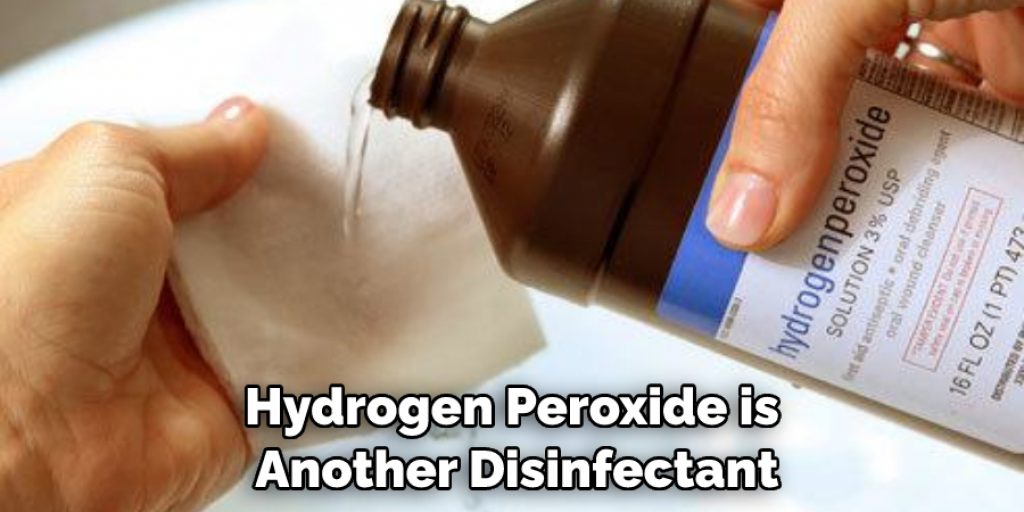
5. Soap and Water
Soap and water can be used to disinfect fabric. To use, mix 1 teaspoon of dish soap with 1 cup of warm water in a bowl or bucket. Dip a clean cloth into the mixture and wring it out until it is only damp. Use the damp cloth to wipe down the fabric, then rinse with clean water and let air dry. You can also use a spray bottle to apply the soap and water mixture, followed by rinsing with clean water. When using this method, be sure to rinse thoroughly as any remaining soap residue may attract dirt and cause discoloration of fabrics.
6. Borax Solution
Borax is another disinfectant that can be used on fabric. To use, mix 1 tablespoon of Borax with 1 cup of warm water in a bowl or bucket until the Borax is dissolved. Dip a clean cloth into the mixture and wring it out until it is only damp. Use the damp cloth to wipe down the fabric, then rinse with clean water and let air dry. It is important to ensure that all the borax solution is removed before allowing the fabric to dry in order to avoid any discoloration or irritation. For best results, repeat this process once a day until the bacteria and germs are completely gone.
7. Bleach Solution
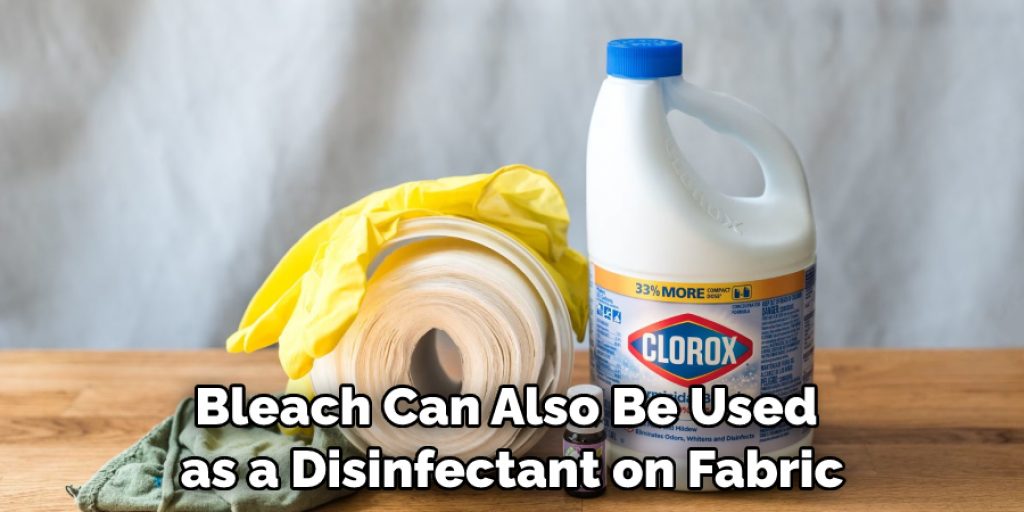
Bleach can also be used as a disinfectant on fabric. To use, mix 1 teaspoon of bleach with 1 cup of warm water in a bowl or bucket. Dip a clean cloth into the mixture and wring it out until it is only damp. Use the damp cloth to wipe down the fabric, then rinse with clean water and let air dry. To make sure the fabric is completely disinfected, repeat the process twice. As with all other cleaning solutions, do a spot test on an inconspicuous area first to make sure there is no discoloration or damage to the fabric.
8. Alcohol wipes
Alcohol wipes are pre-moistened wipes that contain a disinfectant. To use, simply wipe the fabric with an alcohol wipe and let air dry. Alcohol wipes are convenient, and can be used to quickly clean surfaces. They are great for wiping down countertops, tables, and other hard surfaces. They can also be used on fabric items like clothing or upholstery to help sanitize them.
Be sure to spot test the alcohol wipe in an inconspicuous area first before using it on fabric. Alcohol wipes are best for surfaces that need to be quickly disinfected and wiped down. They may not be as effective on heavily soiled items or tougher germs, however. Be sure to read the instructions on the alcohol wipe package before using it, as some wipes are meant for specific tasks.
9. Antibacterial Sprays
Antibacterial sprays can be used on fabrics to kill germs. To use, spray the fabric and allow it to dry before use. Regular use of an antibacterial spray can help reduce the spread of disease-causing bacteria. It is important to follow the instructions on the label when using antibacterial sprays. Some disinfectants may be toxic or cause skin irritation, so be sure to wear protective clothing when applying them.

Conclusion
To protect ourselves and our families from illness and infection, it’s important to regularly clean and disinfect fabric using one of the methods outlined above. This can be done every week or more often if necessary. Taking these steps can help to combat the spread of germs and provide a healthy environment for everyone.
So take action today and make sure your fabric is disinfected! Remember, prevention is key when it comes to stopping the spread of infections—regular disinfection is an essential part of that prevention. By following these easy steps, you’ll be able to keep yourself and your family safe from harm while also helping ensure that your fabrics remain healthy and free of any harmful bacteria or viruses. Thanks for reading, and we hope this has given you some inspiration on how to disinfect fabric!

